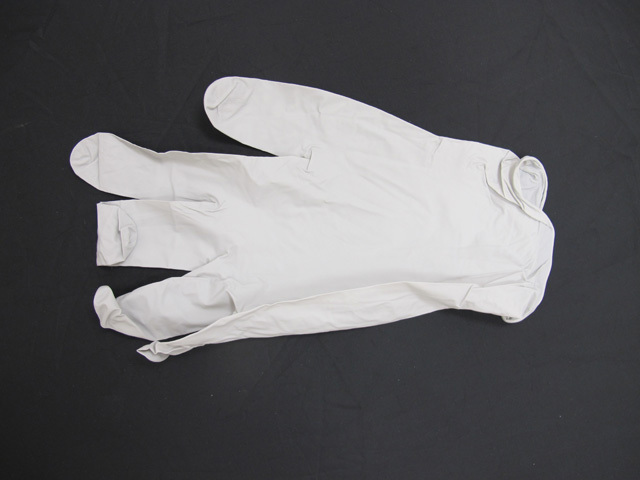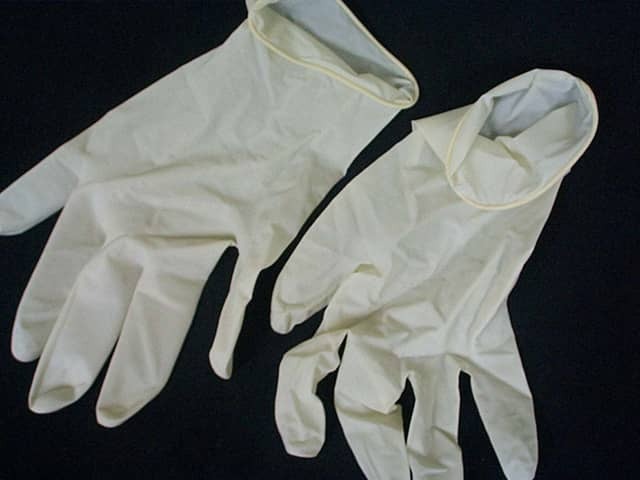Main menu
Common skin conditions

NEWS
Join DermNet PRO
Read more
Quick links
Gloves for hand protection — extra information
Human hands are unique. They grasp, hold, move and manipulate objects so that we can perform daily activities to live and work. Reports of hand and finger injuries have ranged from 25% up to 80% of all workplace accidents. Hence it is extremely important that workplaces provide safe and effective measures to reduce hand injuries. One of the easiest methods to protect hands is to wear gloves.
A different glove for every job
The first step employers can take to reduce hand injuries is to assess their operations and examine glove usage throughout their business processes. To assist in finding the “right glove to fit the job” many countries have occupational glove standards. The Australian/New Zealand glove standards AS/NZS 2161.1:2000 ensure improved hand, wrist and forearm safety in the work place. In the United States the ISEA developed the first American National Standard for glove selection criteria, ANSI/ISEA 105, and the Hand Protection Group is represented on other standards technical committees in the US and worldwide. There are also numerous glove manufacturers that provide guidelines on glove selection.
The following table shows some of the gloves types available for the different working environments.
Glove Type |
Working environment |
|---|---|
Disposable |
Used in any working environment to protect hands and the products being handled, e.g. food-handling, healthcare workers |
Liquidproof protection |
Used in work involving liquids with a low chemical aggression factor, e.g. abrasive cleaning agents |
Chemical protection |
Used when working with chemicals that may penetrate or degrade gloves |
Thermal protection |
Used to protect against prolonged contact with cold or hot objects, e.g. working with liquid nitrogen |
Cutting and heavy duty work protection |
Used for heavy duty mechanical work or jobs at risk of abrasion, cuts, tears and punctures |
Critical environment protection |
Used in controlled or confined environments with strict requirements for cleanliness, e.g. sterile surgical gloves |

Nitrile

Vinyl

Latex
Getting the “best fit”
Worker safety goes beyond selecting the right glove for the right job. Other factors to consider include:
- Making sure the glove fits correctly and comfortably.
- The glove should have a good fit so it allows dexterity and tactile sensitivity.
- Bulky or loose fitting gloves can be hazardous as they may fall off or get caught up in equipment.
- Studies have shown that uncomfortable gloves can increase worker downtime and decrease productivity.
- Being aware of potential allergies to certain glove materials. For example:
- Immediate contact urticaria to rubber gloves due to latex allergy
- Delayed contact allergic dermatitis to rubber accelerators
- Contact allergic dermatitis to diethylthiourea in neoprene
- Contact allergic dermatitis to chrome-tanned leather
- Sweat under gloves can also result in irritant contact dermatitis, aggravating existing hand dermatitis.
- Appropriate training for staff. Workers need to understand the purpose of wearing gloves and when or how often they should be changed. They should also be given advice on how they can care for their hands, see Hand care for healthcare workers.
References
- AS/NZS 2161.1:2000. Standards NZ: Occupational protective gloves – Selection, use and maintenance
- ANSI/ISEA 105: American National Standard for Hand Protection Selection Criteria
- MAPA Professional: A solution for every hand that works
On DermNet
- Hand rubs
- Surgical gloves
- Hand dermatitis
- Patch tests
- Latex allergy
- Hand care for healthcare workers
Other websites
- Healthcare careers advice — Skin@Work, Occupational Dermatology Research and Education Centre, Victoria, Australia
